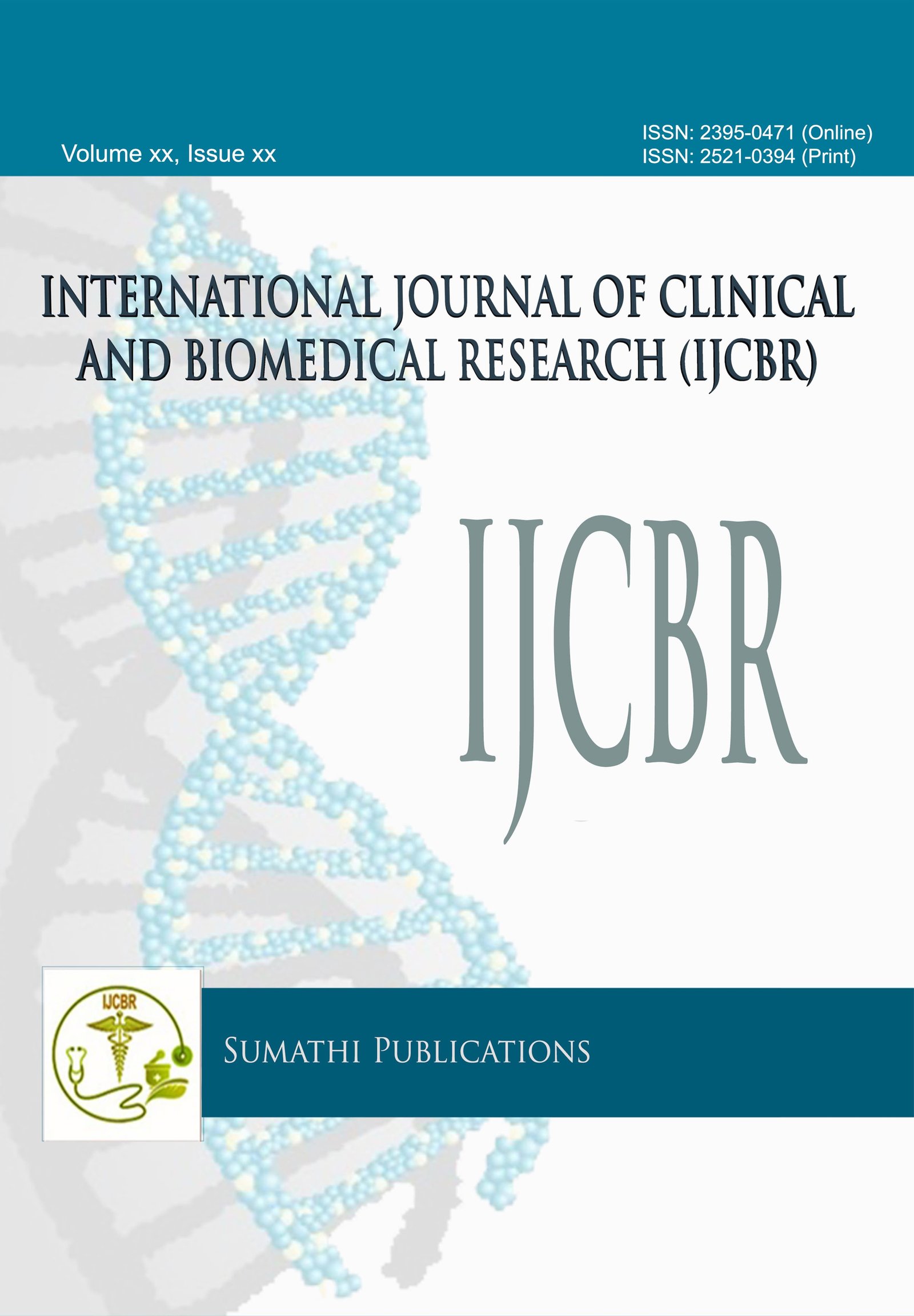STUDY OF HbA1c AS A BIOMARKER IN DYSLIPIDEMIA AND ATHEROGENICITY IN TYPE 2 DIABETES MELLITUS
Abstract
HbA1c is being used to assess the glycemic control for many years. This study was done to evaluate the importance of HbA1c in predicting dyslipidemia and atherogenecity in type 2 Diabetes. Methods: 200 type 2 diabetic patients were taken as subjects. Fasting and post meal blood sugar, Glycated haemoglobin (HbA1c), lipid profile, lipid ratios and atherogenic index of plasma(AIP) was analysed in these patients. The patients were divided into 2 groups depending on their HbA1c; Good Glycemic Control was defined as having HbA1c ≤ 7.0% and Poor Glycemic Control as HbA1c >7.0%. Results & Discussion: We found a significant increase in the levels of blood glucose, total serum cholesterol (TC), triglyceride, LDL cholesterol (LDL-C) and VLDL cholesterol (VLDL-C), TC/HDL-C, LDL-C/HDL-C, atherogenic index of plasma (AIP) and a significant decrease in the levels of HDL cholesterol (HDL-C) in patients with HbA1c >7% as compared to patients with HbA1c ≤ 7%. HbA1c had a direct and significant correlation with TC, TG, VLDL-C, LDL-C, TC /HDL-C, LDL-C/HDL-C, and an inverse correlation with HDL-C. AIP correlates with cardiovascular risk very well, and the association between HbA1c with various lipid parameters and atherogenic ratios suggests the importance of glycemic control in order to control dyslipidemia and future risk of cardiovascular disease in type 2 diabetics.
KEYWORDS: Lipid profile; Type 2 diabetes mellitus; Glycosylated haemoglobin; Glycemic control, Atherogenic index of plasma.
Downloads
Downloads
Published
Issue
Section
License
The journal allows the author(s) to hold the copyright without restrictions and will retain publishing rights without restrictions.
The submitted papers are assumed to contain no proprietary material unprotected by patent or patent application; responsibility for technical content and for protection of proprietary material rests solely with the author(s) and their organizations and is not the responsibility of the journal. The main (first/corresponding) author is responsible for ensuring that the article has been seen and approved by all the other authors. It is the responsibility of the author to obtain all necessary copyright release permissions for the use of any copyrighted materials in the manuscript prior to the submission.
What are my rights as an author?
It is important to check the policy for the journal to which you are submitting or publishing to establish your rights as
Author. Journal's standard policies allow the following re-use rights:
- The journal allows the author(s) to hold the copyright without restrictions.
- The journal allows the author(s) to obtain publishing rights without restrictions.
- You may do whatever you wish with the version of the article you submitted to the journal.
- Once the article has been accepted for publication, you may post the accepted version of the article on your own personal website, your department's website or the repository of your institution without any restrictions.
- You may not post the accepted version of the article in any repository other than those listed above (i.e. you may not deposit in the repository of another institution or a subject-matter repository) until 12 months after publication of the article in the journal.
- You may use the published article for your own teaching needs or to supply on an individual basis to research colleagues, provided that such supply is not for commercial purposes.





